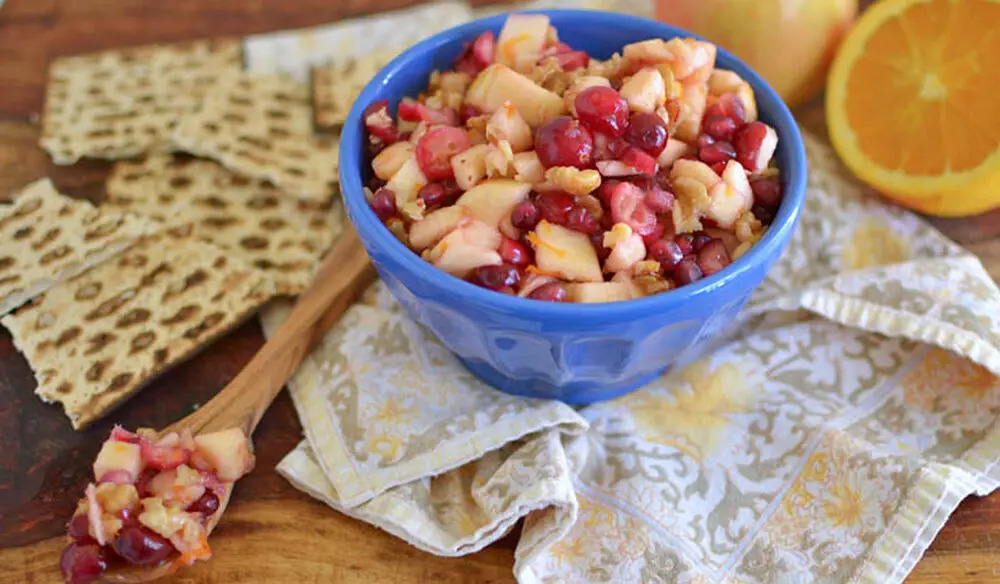Sushi has transcended its origins in Japan to become a favorite cuisine worldwide, celebrated for its variety, flavors, and artistry. While many may think sushi preparation is best left to the professionals, there are numerous sushi rolls that enthusiasts can create at home with some practice and the right ingredients. Here are ten sushi rolls that you can make in the comfort of your own kitchen:
California Roll: A classic and a great starting point for sushi-making beginners. It typically includes crab meat (or imitation crab), avocado, and cucumber. The rice is on the outside, making it an “inside-out” roll. This roll is perfect for those who are still warming up to the idea of raw fish.
Spicy Tuna Roll: For those who like a bit of heat, the spicy tuna roll is a mix of raw tuna, spicy mayo, and sometimes cucumber for crunch. It’s a straightforward roll that packs a punch and introduces beginners to working with raw fish.
Philadelphia Roll: A fusion roll that incorporates cream cheese, smoked salmon, and cucumber. It’s a hit for its creamy texture and the rich flavor of the salmon. This roll is a testament to the versatility of sushi, blending Japanese techniques with Western flavors.

Vegetable Roll: For vegetarians or those looking for a lighter option, the vegetable roll is ideal. It can include a variety of vegetables like avocado, cucumber, bell pepper, and asparagus. This roll is colorful, crunchy, and packed with vitamins.
Dragon Roll: A more advanced roll, featuring eel (unagi) and cucumber inside, with thinly sliced avocado layered on the outside to resemble dragon scales. It’s often topped with eel sauce. This roll requires a bit more skill but is incredibly rewarding and visually stunning.
Tempura Shrimp Roll: A delightful option featuring tempura-battered shrimp for a crunchy texture, complemented by avocado, cucumber, and sometimes lettuce. It’s an excellent way to introduce cooked seafood into your sushi repertoire.
Rainbow Roll: Essentially a California roll topped with an array of fish slices like tuna, salmon, and avocado. The variety of colors mimics a rainbow. It’s a beautiful, celebratory roll that’s perfect for parties and impressing guests.
Tuna Avocado Roll: A simple yet delicious combination. This roll focuses on the freshness of the raw tuna and the creaminess of the avocado. It’s a minimalist roll that highlights the quality of the ingredients.
Salmon Roll: Just like the tuna avocado roll, but with salmon. It’s rich in Omega-3 fatty acids and offers a different flavor profile. This roll is about appreciating the delicate taste of fresh salmon.
Eel Avocado Roll: Eel (unagi) is cooked and typically served with a sweet and savory eel sauce. Paired with avocado, this roll offers a unique taste and texture experience. It’s a great way to explore the more traditional flavors of sushi.

Tips for Making Sushi at Home:
Rice is Key: The foundation of good sushi is well-prepared sushi rice. Make sure it’s seasoned with a mix of rice vinegar, sugar, and salt.
Fresh Ingredients: Use the freshest fish you can find, preferably from a reputable fish market or supplier known for sushi-grade products.
Sharp Knife: A sharp knife is essential for clean cuts. Keep it wet to avoid sticking.
Practice: Don’t be discouraged if your first few rolls aren’t perfect. Sushi making is an art that improves with practice.
Making sushi at home can be a fun and rewarding experience. These ten rolls offer a variety of flavors and complexities, suitable for beginners and experienced cooks alike. Enjoy the process of preparation and the delicious results of your labor!
As you dive deeper into the art of sushi making, you’ll discover that the process is as much about the journey as it is about the destination. Here are additional insights and variations to enhance your sushi-making adventures at home:
Expanding Your Sushi Palette:
Fusion Rolls: Don’t be afraid to experiment with non-traditional ingredients. Fusion rolls combine elements from different cuisines, creating unique and innovative flavors. Try incorporating ingredients like mango, piquillo peppers, or even tempura-fried vegetables.
Sauce Creativity: Elevate your rolls with a variety of sauces. Beyond the classic soy sauce, consider making or buying sauces such as spicy mayo, ponzu, or teriyaki. Drizzling these sauces on your rolls can add an extra layer of flavor.
Garnishes and Toppings: Add texture and visual appeal with garnishes like sesame seeds, tobiko (flying fish roe), or thinly sliced green onions. Not only do these add flavor, but they also make your homemade sushi look more professional.

Techniques to Master:
Rolling: Practice the technique of rolling sushi tightly and evenly. This might take some practice, but it’s crucial for creating rolls that hold together well. A bamboo sushi mat can be a great aid in this process.
Slicing: Learning to slice sushi rolls cleanly without squishing them is an art. A gentle sawing motion with a sharp, wet knife is key. Remember to clean the knife with a damp cloth between slices for the cleanest cuts.
Presentation: The presentation is an integral part of the sushi experience. Arrange your rolls on a platter with intention, considering color and composition. Accompaniments like pickled ginger, wasabi, and soy sauce should be placed neatly on the side.
Advanced Sushi Creations:
Once you’re comfortable with basic rolls, challenge yourself with more advanced techniques:
Nigiri: Hand-formed sushi featuring a slice of raw fish over pressed vinegared rice. It requires a good understanding of how to cut fish and shape rice by hand.
Sashimi: Pure, thinly sliced raw fish without rice. This dish emphasizes the quality and freshness of the fish above all.
Chirashi: A bowl of sushi rice topped with a variety of sashimi slices. It’s a simpler way to enjoy the flavors of sushi without the intricacies of rolling.
Sustainable Sushi Making:
As you explore the world of homemade sushi, consider the sustainability of the seafood you use. Overfishing and unsustainable fishing practices are significant concerns in today’s oceans. Look for seafood that is certified sustainable by reputable organizations, and be open to using less traditional but more sustainable fish species in your sushi.
Enjoy the Process:
Remember, making sushi at home is about exploration, learning, and enjoying the process. Each roll you make is a step toward mastering the craft. Celebrate your successes, learn from your challenges, and most importantly, enjoy the delicious results of your efforts.
By embracing these tips and techniques, you can turn your kitchen into a sushi bar, impressing friends and family with your homemade creations. Whether you stick to traditional rolls or venture into creating your own unique combinations, the world of sushi offers endless possibilities for culinary creativity.
FAQ: Making Sushi at Home
What makes sushi rice different from regular rice?
Sushi rice is a short-grain variety known for its ability to stick together, which is crucial for forming sushi rolls and nigiri. It’s seasoned with a blend of rice vinegar, sugar, and salt to give sushi its distinctive flavor.
Where can I buy sushi-grade fish?
Sushi-grade fish refers to fish that has been frozen at temperatures that kill parasites, making it safe for raw consumption. Look for it at reputable fish markets, Asian grocery stores, or online retailers that specialize in sushi-grade products.
Can I make sushi without a bamboo mat?
Yes, you can. While a bamboo mat (makisu) helps in rolling sushi evenly, you can use a piece of parchment paper or a clean kitchen towel as an alternative. The key is to apply even pressure when rolling.
How do I prevent sushi rolls from falling apart?
Ensure the nori (seaweed sheet) is on a flat surface and that you’re not overfilling it. Roll it tightly and apply even pressure. Using a bit of water on the edge of the nori can help seal the roll. Letting the roll sit for a minute before cutting can also help.
What are some vegetarian fillings for sushi?
There are many options for vegetarian sushi, including avocado, cucumber, bell pepper, asparagus, tofu, and pickled radish. Feel free to experiment with your favorite vegetables.
How do I make spicy mayo?
Spicy mayo is a simple mix of mayonnaise and sriracha sauce. The ratio depends on your preference for spiciness, but a good starting point is 1 tablespoon of sriracha to 4 tablespoons of mayonnaise. Adjust to taste.
How long can homemade sushi be stored?
Homemade sushi is best enjoyed immediately after making. However, if you must store it, wrap it tightly in plastic wrap and keep it in the refrigerator. Consume within 24 hours for the best quality and safety.
Is it safe to eat raw fish at home?
Yes, if you use sushi-grade fish that’s been handled and stored properly. It’s important to buy from reputable sources and keep the fish refrigerated until you’re ready to use it.
Can I use brown rice for sushi?
Yes, you can use brown rice for a healthier option, though it will have a different texture and flavor profile. Be sure to use short-grain brown rice and season it similarly to white sushi rice.
How do I cut fish for sushi?
Use a sharp knife and cut against the grain of the fish in a single, smooth motion. The thickness of the slices will depend on the type of sushi you’re making, but generally, they should be about 1/8 to 1/4 inch thick.
Can I make sushi if I’m allergic to seafood?
Absolutely! There are many non-seafood options for sushi, including vegetarian rolls, rolls with cooked ingredients like chicken or beef, and fruit rolls for a sweet twist.
How do I make my sushi look professional?
Practice is key. Pay attention to the details like the uniformity of your slices, the tightness of your rolls, and the presentation on the plate. Garnishes and sauces can also enhance the appearance of your sushi.
By addressing these frequently asked questions, you’ll be better equipped to start making sushi at home. Remember, practice makes perfect, and each roll you make brings you closer to mastering the art of sushi. Enjoy the process and the delicious results of your labor!


















